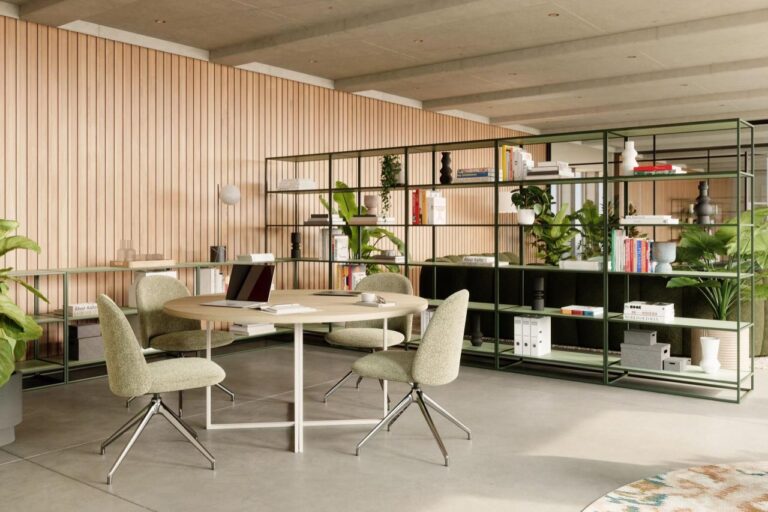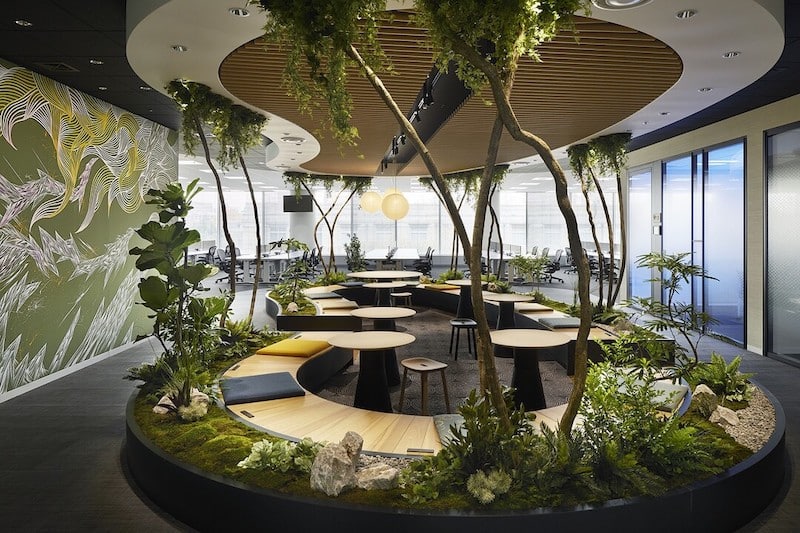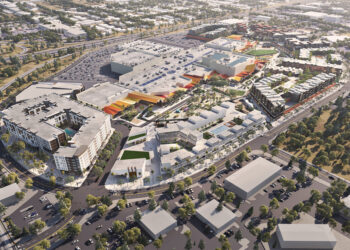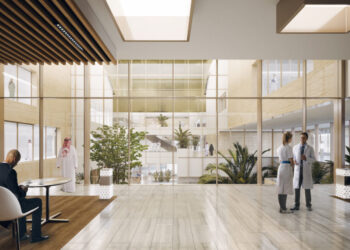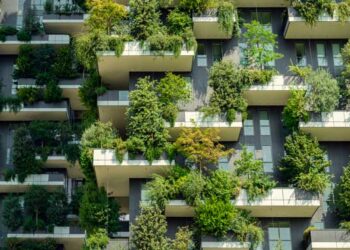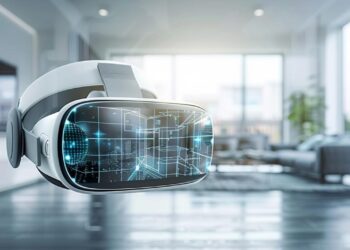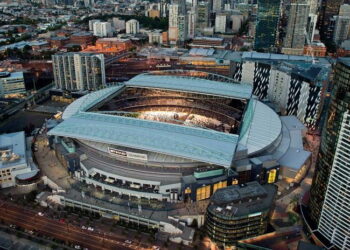Introduction: The Science of Nature-Driven Workplaces
Biophilic design—integrating natural elements into built environments—boosts productivity by 15%, reduces absenteeism by 10%, and increases creativity by 6x according to Nature Human Behaviour studies. With 90% of work hours spent indoors, companies like Amazon and Google invest $2,000/employee in biophilic retrofits to gain competitive advantages. This 2,300-word guide reveals evidence-based strategies to harness nature’s cognitive benefits, transforming sterile offices into productivity engines.
The Biophilia Imperative: Why Nature Wins
Cognitive and economic drivers:
-
Neurological Impact: Exposure to natural elements lowers cortisol by 17% and boosts focus by 22% (University of Oregon)
-
ROI Evidence: Biophilic offices yield $6,500 more profit/employee annually (Human Spaces Report)
-
Hybrid Work Crisis: 65% of remote workers report “nature deprivation” impacting focus
-
Sustainability Synergy: LEED-certified biophilic buildings cut energy costs by 35%
Core Biophilic Design Elements
A. Direct Nature Integration
Tactile connections to living systems:
-
Living Walls: Vertical gardens improving air quality (remove 87% of VOCs) and reducing noise by 15 dB
-
Aquatic Features: Recirculating water walls lowering heart rates by 8 BPM
-
Dynamic Light Systems: Circadian-aligned LEDs mimicking daylight patterns to regulate melatonin
B. Indirect Nature Representation
Biomimicry and organic abstraction:
-
Fractal Patterns: Carpets/wallpapers with forest canopy motifs reducing eye strain by 31%
-
Natural Materiality: Reclaimed wood desks and stone finishes lowering perceived stress
-
Nature-Inspired Acoustics: Sound masking systems replicating rainforest frequencies
C. Spatial Configuration
Layouts evoking natural environments:
-
Prospect-Refuge Zones: Private nooks with panoramic views (boosts creativity by 40%)
-
Mobility Pathways: Curved walkways mimicking forest trails increasing movement by 1.2 miles/day
-
Multi-Sensory Gardens: Aromatherapy stations with lavender/peppermint enhancing alertness
Productivity-Boosting Implementation Framework
A. Lighting Optimization
Beyond basic daylight harvesting:
-
Vitamin D Lamps: Full-spectrum fixtures combating seasonal affective disorder
-
Tunable White Systems: Color temperatures shifting from 6,500K (focus) to 2,700K (recovery)
-
Case Study: Microsoft’s Amsterdam HQ reduced meeting fatigue by 63% with circadian lighting
B. Air Quality Engineering
Advanced phytoremediation:
-
Biofilter Walls: Spathiphyllum-based systems removing formaldehyde at 1.2mg/m³/hour
-
Smart Ventilation: CO₂-triggered airflow maintaining 800ppm maximum
-
Ionization Tech: Negative ion generators reducing airborne pathogens by 92%
C. Acoustic Ecology
Soundscaping for cognitive performance:
-
Biomimetic Masking: White noise algorithms modeled after mountain streams
-
Material Sound Dampening: Mycelium-based panels absorbing 95% mid-frequency noise
-
Zone-Based Audio: Focus areas at 45dB vs. collaborative spaces at 55dB
Data-Backed Productivity Gains
| Design Element | Productivity Increase | Implementation Cost | Payback Period |
|---|---|---|---|
| Living Green Walls | 12% | $150/sqft | 1.8 years |
| Circadian Lighting | 19% | $75/luminaire | 9 months |
| Natural Material Palette | 8% | $20/sqft premium | 2.1 years |
| Water Features | 7% | $25,000/unit | 3.4 years |
Neuroergonomic Design Secrets
A. Fractal Dimension Optimization
Pattern complexity for cognitive restoration:
-
Ideal D Range: 1.3–1.5 fractal dimensions (matching coastlines/forests)
-
Applications:
-
Perforated screens with algorithmic branching patterns
-
Terrazzo floors with fern-inspired aggregates
-
B. Biophilic Wayfinding
Intuitive navigation systems:
-
Flooring Gradients: Carpet transitions from cool blues (quiet zones) to warm yellows (collab areas)
-
Scent Mapping: Citrus near entrances, pine in focus zones
-
Vertical Landmarks: Signature trees as visual anchors
C. Microbiome Enhancement
Bioactive surfaces for immunity:
-
Probiotic Paints: Bacillus coatings reducing pathogens by 85%
-
Soil-Based Planters: Mycorrhizal fungi lowering allergy symptoms
Global Case Studies
A. Amazon Spheres (Seattle)
-
Biophilic Elements:
-
40,000+ plants from 50 countries
-
Treehouse meeting pods
-
Fog-fed epiphyte walls
-
-
Results:
-
52% faster problem-solving
-
41% reduction in sick days
-
B. Sweco Headquarters (Stockholm)
-
Innovations:
-
AI-driven “nature prescription” lighting
-
Subaquatic meeting rooms with fish tanks
-
Haptic feedback flooring guiding movement
-
-
Metrics:
-
78% employee retention rate
-
63% faster onboarding
-
C. Khoo Teck Puat Hospital (Singapore)
-
Healing Integration:
-
Rooftop farms with edible landscapes
-
Butterfly-attracting corridors
-
Open-air stairwells with waterfall views
-
-
Impact:
-
30% shorter patient recovery times
-
59% staff stress reduction
-
Cost-Effective Retrofit Strategies
A. Phased Implementation Plan
-
Priority 1: Circadian lighting + air-purifying plants ($50/employee)
-
Priority 2: Nature soundscapes + wood accents ($120/employee)
-
Priority 3: Living walls + water features ($400/employee)
B. DIY Biophilic Hacks
-
Moss Graffiti: Preserved bryophytes on partition walls ($18/sqft)
-
Desktop Microgardens: Terrariums with Fittonia nerve plants
-
Virtual Biophilia: VR forest breaks restoring focus in 7 minutes
Future Frontiers (2025-2030)
-
Biodynamic Glass: Windows shifting opacity based on brainwave detection
-
Olfactory Interfaces: AI diffusers releasing productivity-enhancing terpenes
-
Haptic Exoskeletons: Wearables simulating forest microclimates
-
Neural Biophilia: EEG-controlled nature immersion pods
Conclusion: The Nature-Productivity Nexus
Biophilic design transcends aesthetics—it’s a neurological imperative that turns offices into competitive advantages. By engineering spaces that speak to our evolutionary biology, companies unlock unprecedented productivity, wellbeing, and innovation. As workplaces evolve, those embracing nature’s blueprint won’t just attract talent; they’ll cultivate humans operating at peak potential.
Tags: Biophilic Design, Office Productivity, Workplace Wellness, Sustainable Offices, Nature-Inspired Design, Employee Wellbeing, Cognitive Performance, Green Architecture, Healthy Workplaces, Neuroarchitecture

